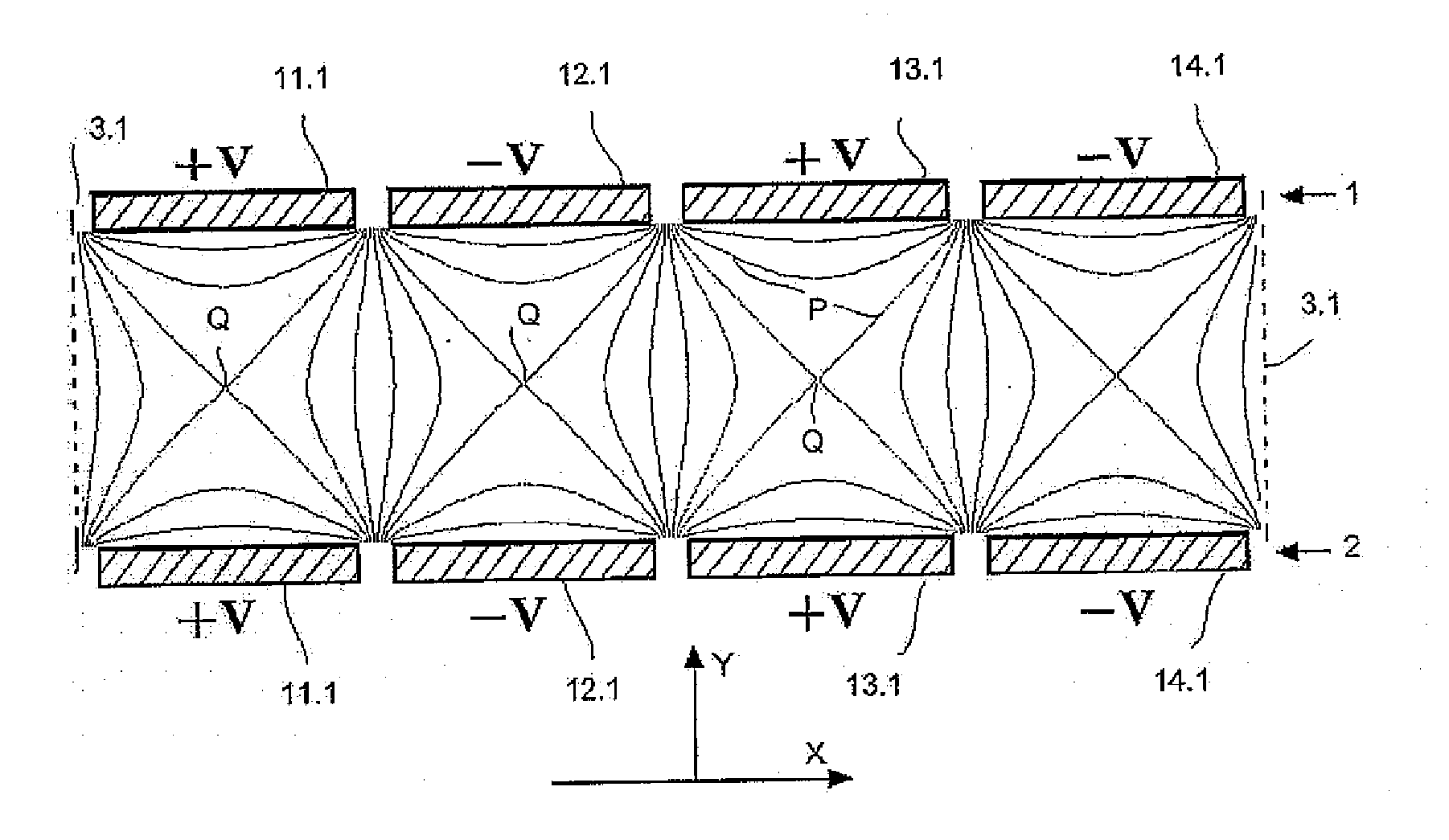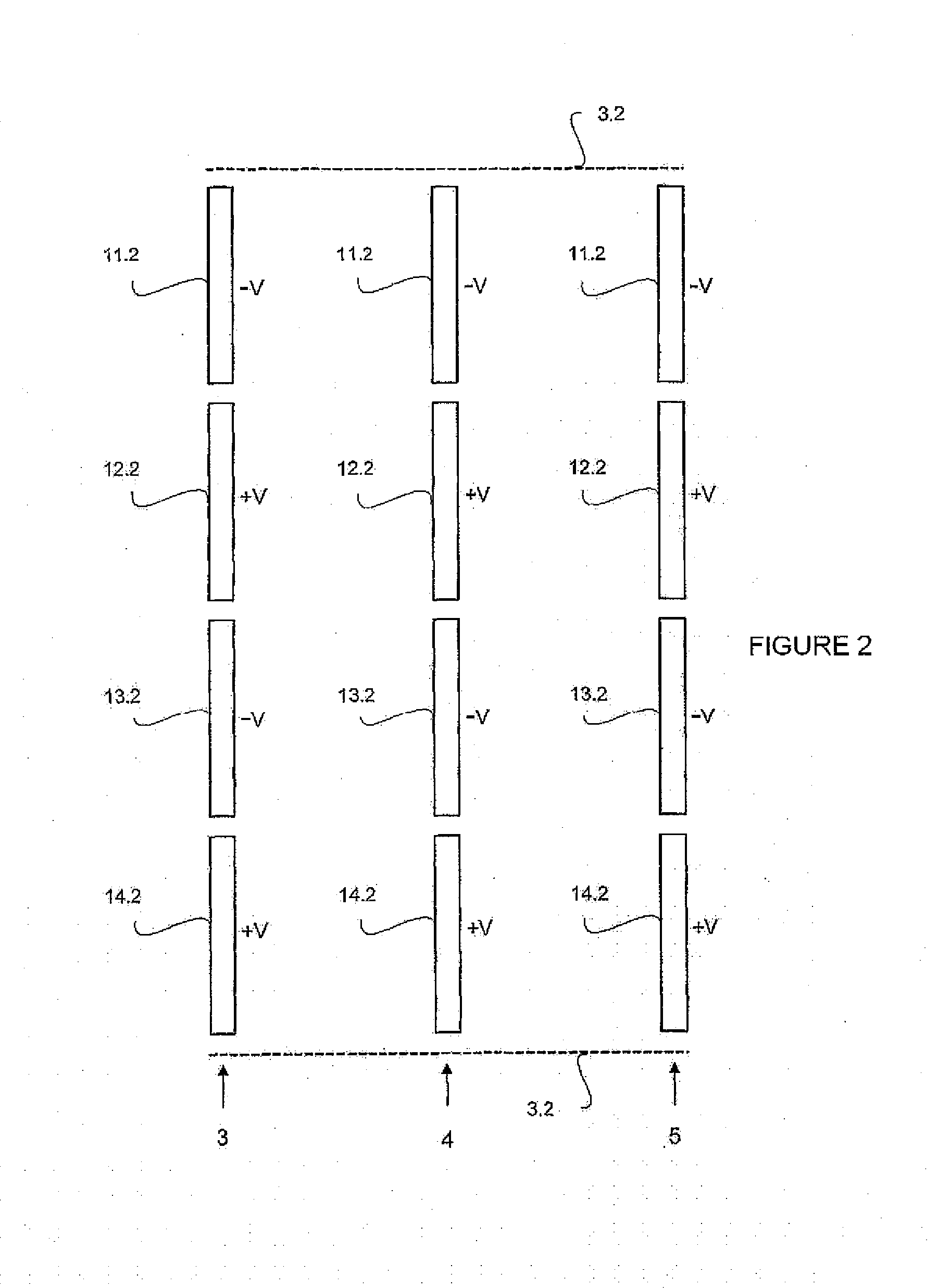Ion trap array
a technology of ion traps and arrays, applied in the direction of isotope separation, electric discharge tubes, separation processes, etc., can solve the problems of destroying the mass resolution in the mass analysis procedure, the number of ions which may be stored in the 3-dimensional rotation symmetric ion trap is limited, and the linear ion trap cannot meet all needs, etc., to achieve the effect of simple geometry
- Summary
- Abstract
- Description
- Claims
- Application Information
AI Technical Summary
Benefits of technology
Problems solved by technology
Method used
Image
Examples
case 1
Case 1:
[0061]FIG. 3 shows a method of the invention. The upper electrode array (1) and lower electrode array (2) both include seven rectangle electrode bars, namely, (1.3, 12.3, 13.3, 14.3, 15.3, 16.3, and 17.3). The electrode bars are made of metal plate, and have the same length in the Z direction, the length of each electrode bar is at least 3 times greater than the breadth of said electrode bar in the X direction (approximately tens of millimetres). The distance between the upper and lower electrode arrays is similar to the sum of the breadth of an electrode bar and the interval between two adjacent electrode bars, generally a few millimetres. The difference is less than 25%. Border electrodes (3.3 and 3.3a) are placed around the planar electrode arrays as the boundary of ion trap field. Electrode (3.3a) is placed on the boundary of paralleled electrode bars on Z direction and electrode (3.3) is placed next to the ends of electrode bars. Border electrodes have inlet holes, silts...
case 2
Case 2:
[0063]FIG. 4 shows another method in which ions are ejected and detected in the X direction. In FIG. 4, the detector (8.4) is placed outside the reticulate boundary electrode (3.4a). After trapped and mass-selected, ions are accelerated by an extractive pulse electric field which was produced by the resistor network (31, 32), and then pass through the boundary electrode (3.4a) on the right and hit the detector (8.4). Although in the FIG. 4 the resistor network (31, 32) are only connected to electrodes of the top electrode array, identical potential is applied to corresponding, opposite electrodes of the bottom electrode array. In cases where identical is potential applied on opposite electrodes, boundary electrodes can be manufactured as shown in FIG. 5: the ends of every electrode (11.5, 12.5, etc.) is joint directly with end plates to corresponding opposite electrodes (11.51, 12.51, etc.) without a zero-potential boundary electrode, and in such case, two electrodes on the o...
PUM
 Login to View More
Login to View More Abstract
Description
Claims
Application Information
 Login to View More
Login to View More - R&D
- Intellectual Property
- Life Sciences
- Materials
- Tech Scout
- Unparalleled Data Quality
- Higher Quality Content
- 60% Fewer Hallucinations
Browse by: Latest US Patents, China's latest patents, Technical Efficacy Thesaurus, Application Domain, Technology Topic, Popular Technical Reports.
© 2025 PatSnap. All rights reserved.Legal|Privacy policy|Modern Slavery Act Transparency Statement|Sitemap|About US| Contact US: help@patsnap.com



